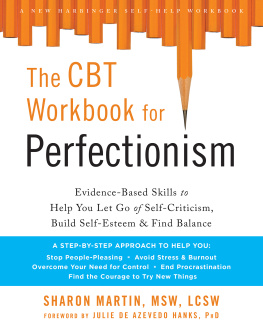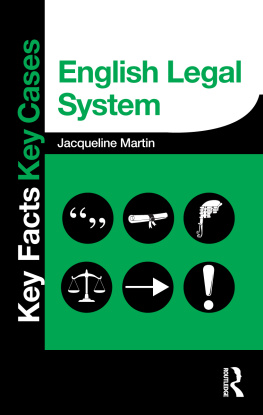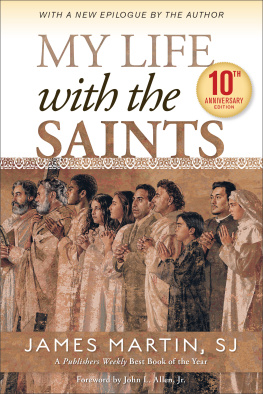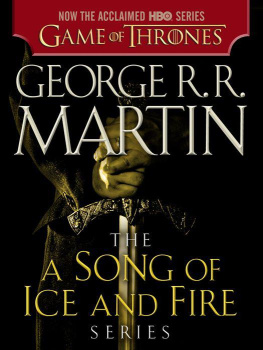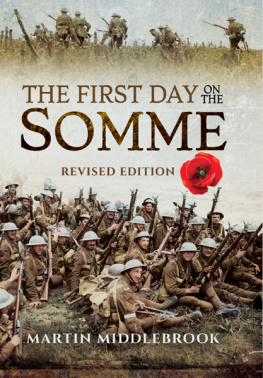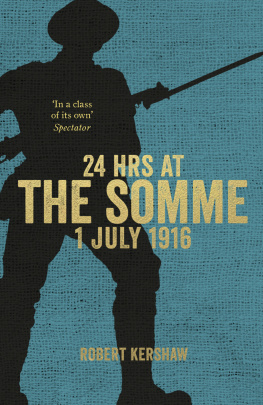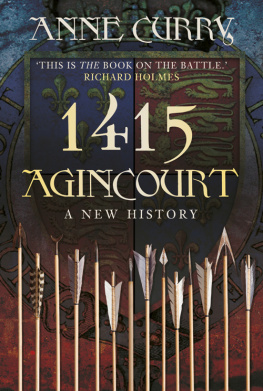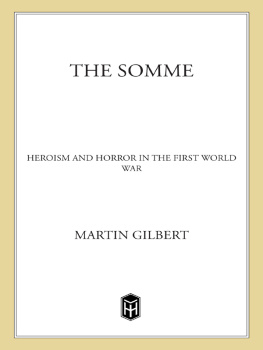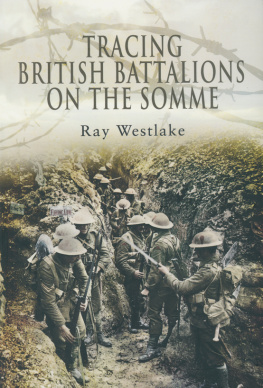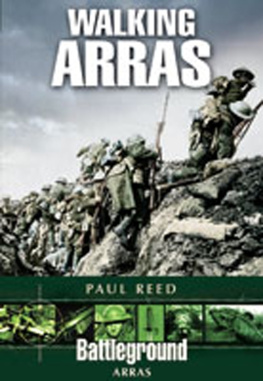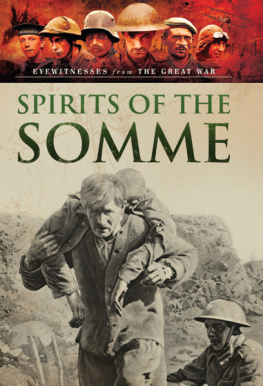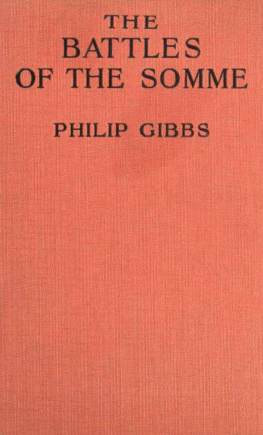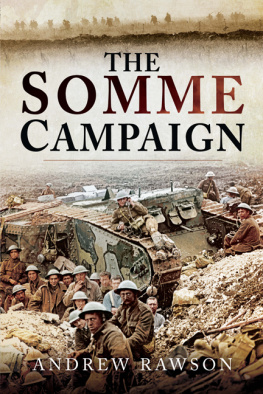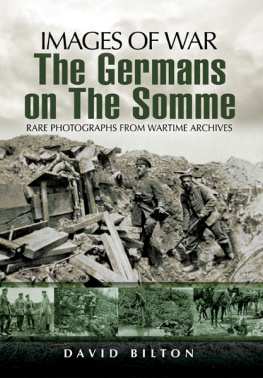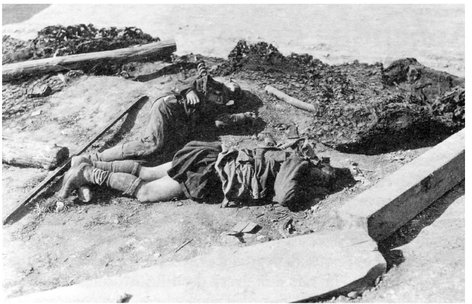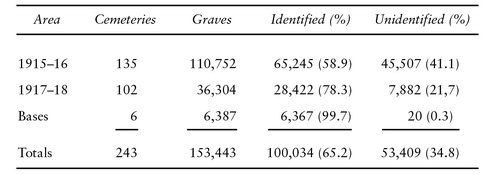Acknowledgements
As usual, the generous and willing help of many people and organizations has helped produce this book and we would like to express our heartfelt thanks to all of them. Pride of place must go to Chris Everitt of Eton Wick, Windsor, a friend and colleague of many years, who has carried out more than 100 researches at the Public Record Office. Close behind come the Wall family from Harpenden George, June and Steve who produced some of the cemetery visiting reports and Trevor Tasker of Swansea for generously allowing the use of some of his aerial photographs. The following all helped in lesser but significant ways; naming them in alphabetical order allows us to thank them all equally: Tony Batten, Richard Bone, Phil Brooks, Margaret Brough, Frank Bryan, Danny and Mark Connelly, Ted Coote, Terry Cork, K. Dunn, H. H. Fovargue, Norman Franks, Peter Gilhooley, Geoff Goodyear, David Haller, Anne Hardy, Trevor Harvey, John Hayward, Jimmy Hill, Mike Hodgson, David Holland, Brian Huggett, Colin Kilgour, Rosalie McFerran, Patrick Mahoney, Christopher Marsden-Smedley, Malcolm Penny, Fred Perrin, Cliff Pettit, Jonathon Raper, Paul Reed, Ernie Shillock, Alan Stansfield, Ray Sturtivant, R. F. Suffield, John Tamplin, Emma Tennant, Major-General David Tyacke and Stephen Watson.
The staff of the Commonwealth War Graves Commission could not have been more helpful, lending cemetery registers and providing answers to 120 research questions; so, many thanks to Roger Dalley, Bernard McGee, Andrew Turnbull, Peter Staff and all others who helped. Members of other organizations to whom we are very grateful are Anne Bell (our daughter) of the Fleet Air Arm Museum, Mrs P. A. Bozdan of the House of Commons Public Information Office, Wendy Chandley of Tameside Archive Service, Gordon Davidson of the Western Front Association, J. M. Hamill, Freemasons Librarian and Curator, Tom Hodgson, Collections Assistant of Canterbury City Council, Eric Munday of the Air Historical Branch (MOD), Helen Pugh of the British Red Cross Archives Section, B. Stephenson of Bedford Central Library, Tony Woodhouse, Historian of the Yorkshire County Cricket Club, and the staff of Boston Library.
We are also fortunate in having been able to draw upon the records held by various regimental historians and would like to thank the following: Border Regiment, Duke of Cornwalls Light Infantry, Kings Regiment, Queens Regiment, Royal Army Medical Corps, Royal Artillery, Royal Engineers, Royal Highland Fusiliers, Royal Irish Rangers, Royal Tank Regiment, Staffordshire Regiment, West Yorkshire Regiment, Worcestershire and Sherwood Foresters Regiment.
We have made some good friends in France during our research tours. Our base was the Htel de la Basilique at Albert where not only did Claude and Danielle Petit look after us consistently well but Claude wrote letters to any commune in France for which we had questions. Also deserving of mention is the chef, Jean-Marie Serpette, not only for his personal attention to our meals but, as an old soldier, for his explanations of the meanings of rank and unit abbreviations on French military memorials. Other helpful people in France were Ren Cretel of Albert, Jean-Michel Declerc of Ligny-Thilloy, Tom and Janet Fairgrieve of Delville Wood, Arthur Leach of Hamel, Yves and Yola Count and Countess dAlcantara of Querrieu, Mark Weightman of Villers-Bretonneux and, further afield, Henri de Wailly of Paris who is an expert on the 1940 campaigns around Abbeville. We also wish to thank for their help Anne-Marie Goales of the Comit Dpartmental du Tourisme de la Somme at Amiens, Jacques R. Adele of the French office of the American Battle Monuments Commission as well as Colonel Bill Ryan, an old friend at the Commissions headquarters in Washington and the staffs of the Directorate of History of the Canadian National Defence Headquarters in Ottawa and the Australian National Memorial at Canberra.
The verse from Vera Brittains poem Perhaps on page 232 is included with the permission of Paul Berry, her literary executor.
Finally, we would like to thank and congratulate our new typist, Margaret Gardner, for producing two drafts of the typescript with much diligence and skill.
2007 note: We would like to thank Tom Brophy of Rochdale and Euan Cluness of Edinburgh for help with this edition.
Other books by Martin Middlebrook
The First Day on the Somme
The Nuremburg Raid
Convoy
The Sinking of the Prince of Wales and Repulse ( with Patrick Mahoney )
The Kaisers Battle
The Battle of Hamburg
The Peenemnde Raid
The Schweinfurt-Regensburg Mission
The Bomber Command War Diaries ( with Chris Everitt )
The Falklands War
The Berlin Raids
The Argentine Fight for the Falklands
Your Country Needs You
The North Midland Territorials Go To War
The Bruckshaw Diaries ( ed. )
Everlasting Arms ( ed. )
Appendix: Cemeteries, Graves and Lost Bodies
The decision of the War Graves Commission to commemorate the name of every British soldier who died, either by name on the headstone above his grave or on one of the various types of memorial to those whose bodies were never identified, together with the publication of registers for the cemeteries and the memorials, presents a unique opportunity to produce several useful sets of statistics and conclusions. The name of every dead British soldier, with his unit and date of death, is recorded somewhere. The coverage is as near perfect as possible; duplications and omissions have mostly been corrected. A few men recorded as missing may have deserted and successfully changed their identities, but the number cannot be sufficient to alter the overall statistics by more than a small fraction. Some statistics for French, German and American deaths will be added later, but these will not be based upon such precise evidence as the British figures. (The figures quoted for British cemeteries and casualties refer to all British Empire and Commonwealth burials and missing in the dpartement of the Somme from 1914 to 1918 and the immediate post-war period and from 1939 to 1945. The figures include men buried or lost just beyond the Somme boundary in the Gommecourt, Serre and Martinpuich-Warlencourt areas during the 1916 battle. Communal cemeteries with less than ten British graves have not been included, but the graves in those small cemeteries are counted in the overall statistics; communal cemeteries with extensions are counted as one cemetery.)
British Cemeteries and Graves, 1914 18
There are 243 First World War British cemeteries on the Somme containing 153,443 British graves, of which 100,034 are identified, leaving 53,409 graves of unidentified bodies. It is possible to allocate the location of the cemeteries roughly to the following areas. The cemeteries made by medical units immediately behind the battlefields are included in appropriate years; those deep in the rear are under Bases.
A soldier in a Scottish battalion and a German soldier killed in the March 1918 fighting.
The largest cemeteries are all in the 1916 area; fourteen cemeteries there contain more graves than the largest 1918 cemetery which is Villers-Bretonneux Military Cemetery with 2,143 graves. The cemeteries contain the graves of twenty-four men who won the Victoria Cross, sixteen of them from 1916.
British Missing, 1914 18
Approximately 106,973 British soldiers died on the Somme and have no known grave. That figure is reached by taking the number of names on the Thiepval Memorial and the New Zealand Memorial at Caterpillar Valley Cemetery, which are all Somme deaths, then adding estimated proportions from seven other memorials which are devoted to Empire countries or to the 1918 campaigns, none of which is confined to the Somme. A figure of 1,000 has also been estimated for the memorial headstones in cemeteries commemorating men whose graves in nearby cemeteries were later destroyed by shell fire, etc. It is accepted that the figure of 106,973 is not entirely accurate, but the reliable figure of 73,279 from the Thiepval and Caterpillar Valley Memorials gives it a sound start.


